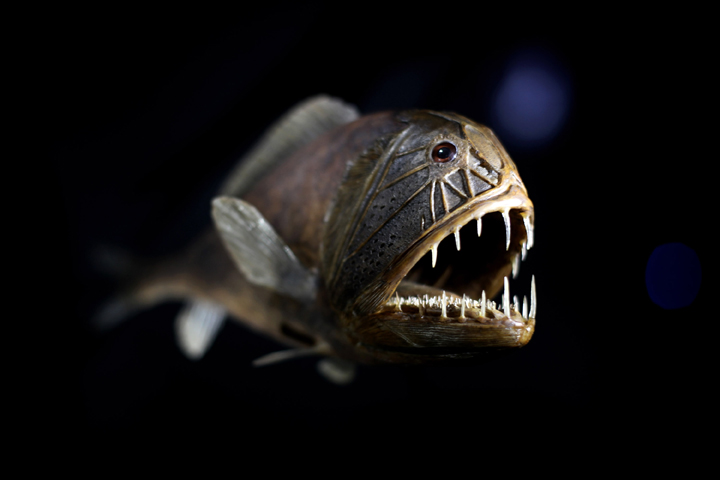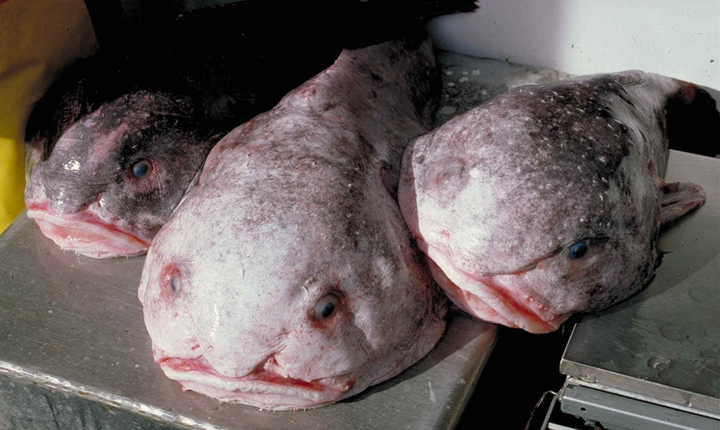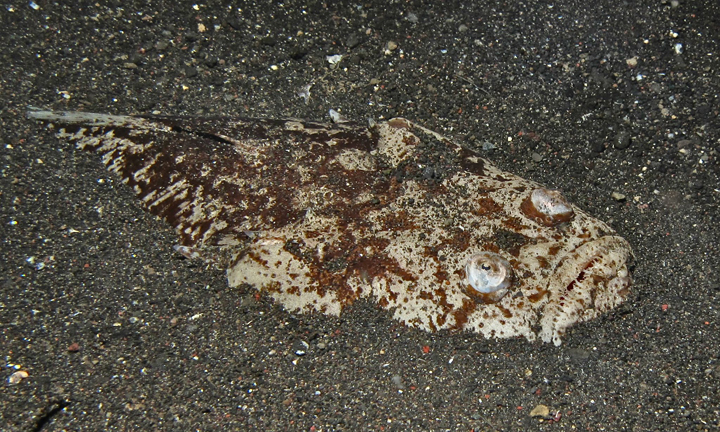Today, June 8, is World Oceans Day. It’s estimated that about 95 per cent of our oceans remain unexplored.

Still, what we do know is that our oceans are full of marvellous life, so much of it unknown. Here are just some of the coolest and strangest fish that live far, far, below in our oceans — that we know about.
Goblin shark
This elusive shark is found in both the Pacific and Atlantic Oceans. They’ve even been spotted in the Gulf of Mexico and along the coast of Japan.
One look at this shark and you’ll see how it got its name: its protruding nose, along with a mouth, truly does resemble a goblin of fairy tales.
The goblin shark prefers to live in the deep, away from sunlight, which has also earned the species the moniker “vampire shark.” They feed on organisms that lie deep in the oceans including sting rays, crabs and mollusks, though in some areas, they’ve been known to eat squid.
And how they feed is pretty interesting: when they approach their prey, their jaw extends outward and then they suck in their meal and chomp down using their powerful and very sharp teeth.
Because the shark is so rarely seen, its numbers are unknown.
Angler fish
You’ve likely seen this funky fish in Finding Nemo.
When you look at the angler fish, you might think the name “angry fish” would be more apt: it looks pretty miffed.
WATCH: The angler fish
There are more than 200 species of this special-looking fish, most of which live deep in the Atlantic and Antarctic oceans. However, some species are known to live in shallow, tropical waters.
The dark-grey fish have huge heads, and frightening translucent teeth. However it’s the bobble on their head for which they are most known.
It looks like a fishing lure, and really, that’s what it is, hence their name. The piece of dorsal spine hangs above their mouths, with a luminous tip. This entices other fish to try to catch it, but — it’s a trap! Once close, the angler fish gobbles up the prey with its enormous mouth (in fact, their mouths are so big they can swallow fish up to twice their own size).
Some species of angler fish can grow up to one metre in length. They are not threatened or endangered.
Blob Sculpin
The blob sculpin looks like something out of Jim Henson’s world: it has an almost human-looking face, with round eyes, a nose and a big mouth.
The blob sculpin (also known as the blob fish) can grow up to 60 centimetres, and, like many of these strange-looking fish, is reclusive. These fish are found deep in the waters of the Pacific Ocean, so not a lot is known about them.
However, according to National Geographic, the male fish have been seen guarding the nest with hundreds of pink eggs. Happy Father’s Day.
Whitemargin stargazer
Though the whitemargin stargazer likes to play hide-and-seek, you wouldn’t want to be found by this guy.
This fish is also known by other names such as the pop-eye fish and marbled stargazer. You might wonder how this fish that looks nothing like anything celestial came about with the name stargazer. Well, that’s due to the position of its eyes: at the top of its head.
So, you might think that those sharp teeth are the reason you’d want to avoid the stargazer. But that’s not the only reason.
This fish was built to hunt: not only does it have razor-sharp teeth, but it’s also venomous. And, as if that wasn’t enough, it’s one the few bioelectric bony fish. That’s right: this fish can shock you — literally. But it’s only a mere 50 volts, depending on water temperature.
Fangtooth
Once again, this fish lives deep in the oceans. Though it is one of the deepest living fish known (they’ve been spotted as deep as 5,000 metres), they typically live between 200 and 2,000 metres. They’ve also been known to make their way to the surface at night.
Most fangtooths are dark brown or black, about 18 centimetres long, and hunt their prey using their sense of smell and even the slightest bit of sunlight that might penetrate the depths. They are found in temperate waters around the world.
Interestingly, their feeding habits vary depending on age: juveniles eat crustaceans while adults eat fish.
And though they look pretty terrifying, since they’re only found in the deep, they don’t pose a threat to humans.






Comments